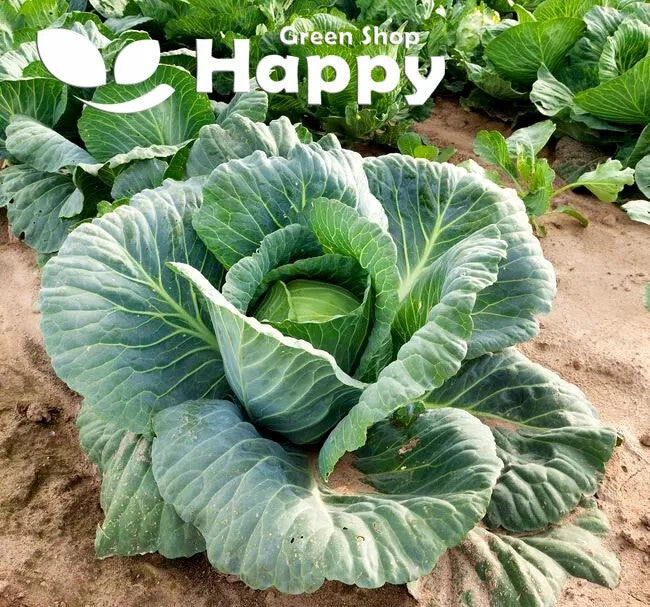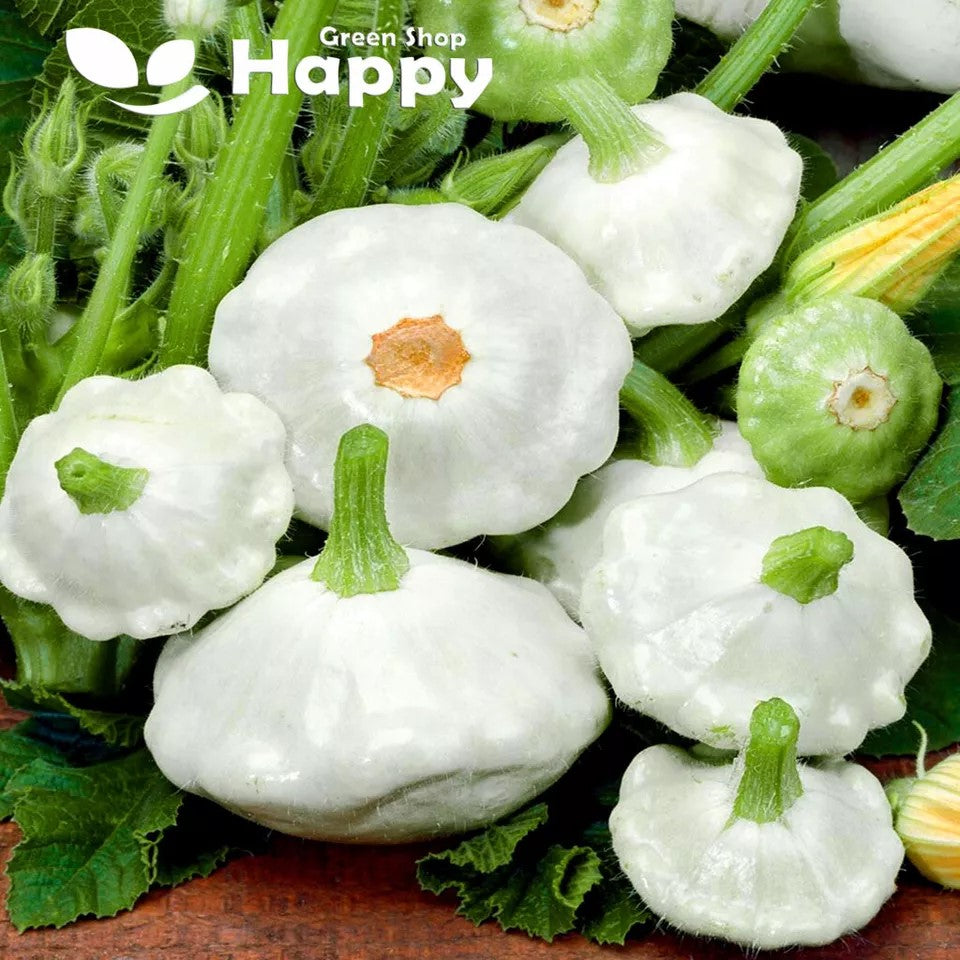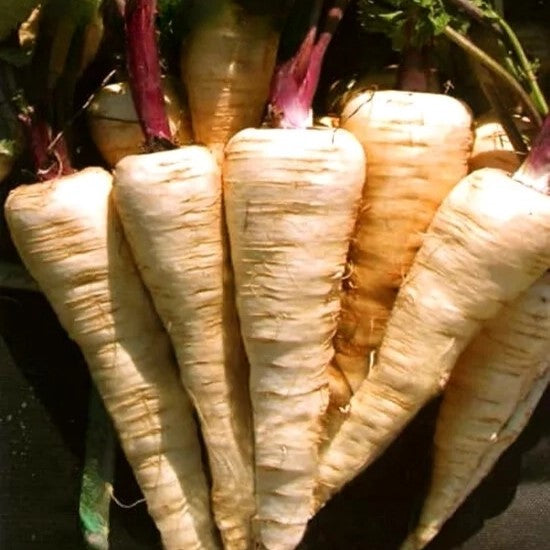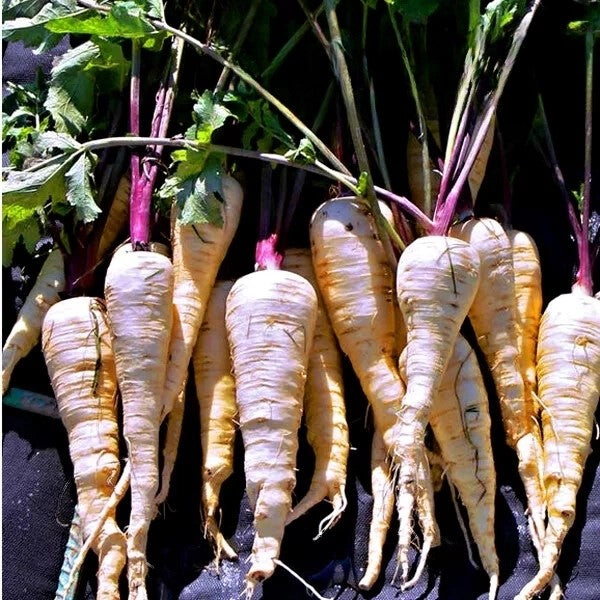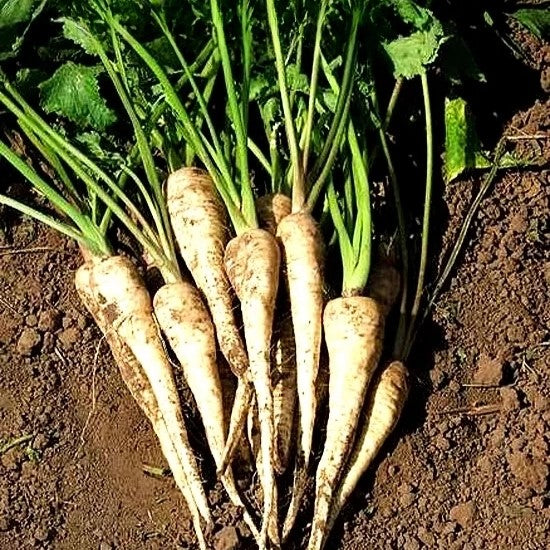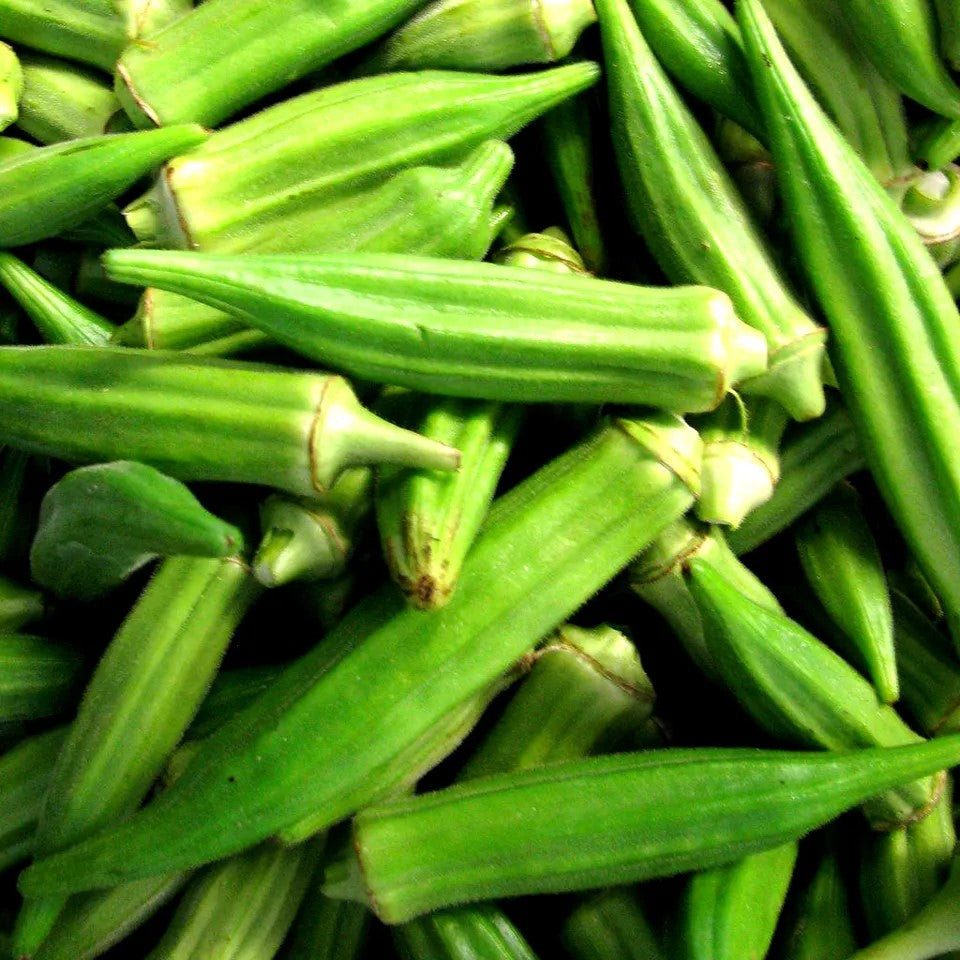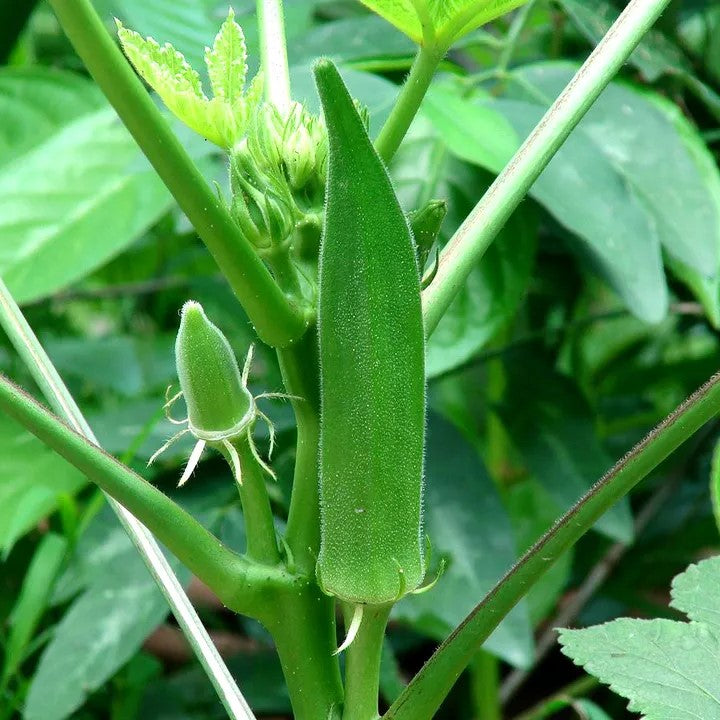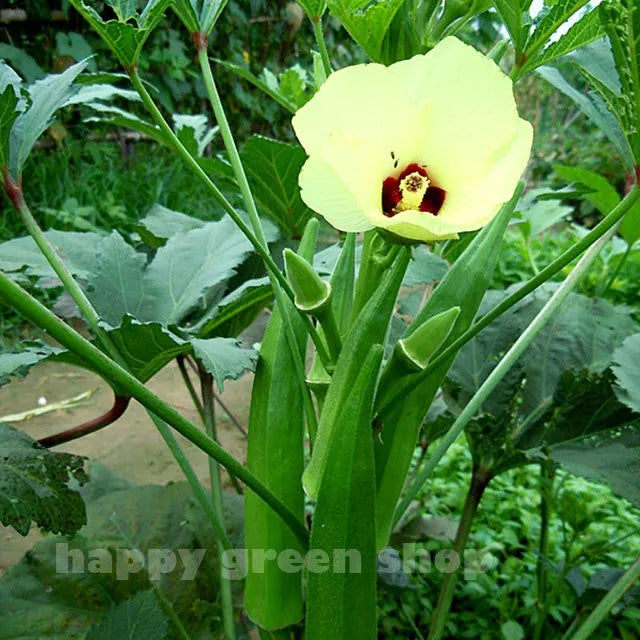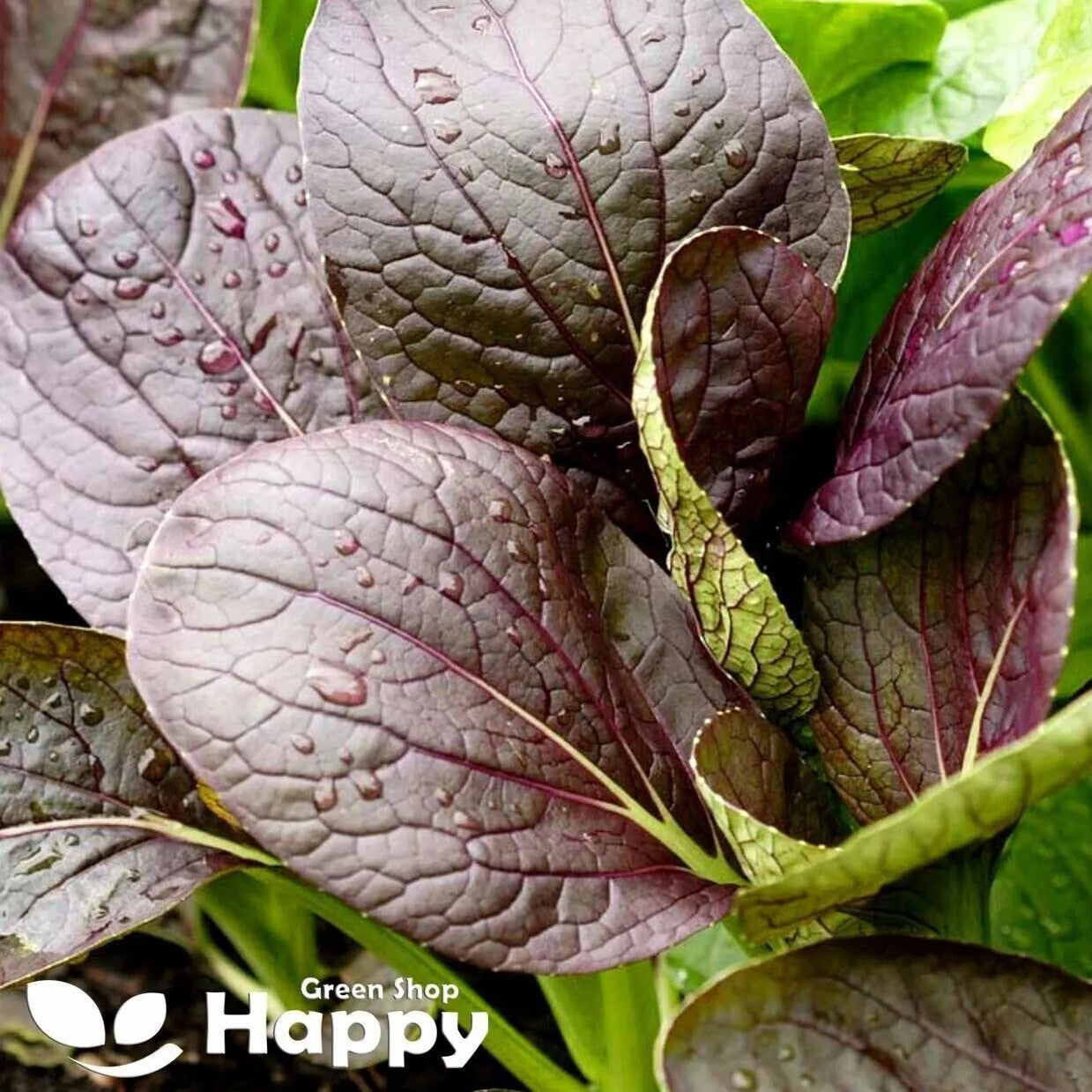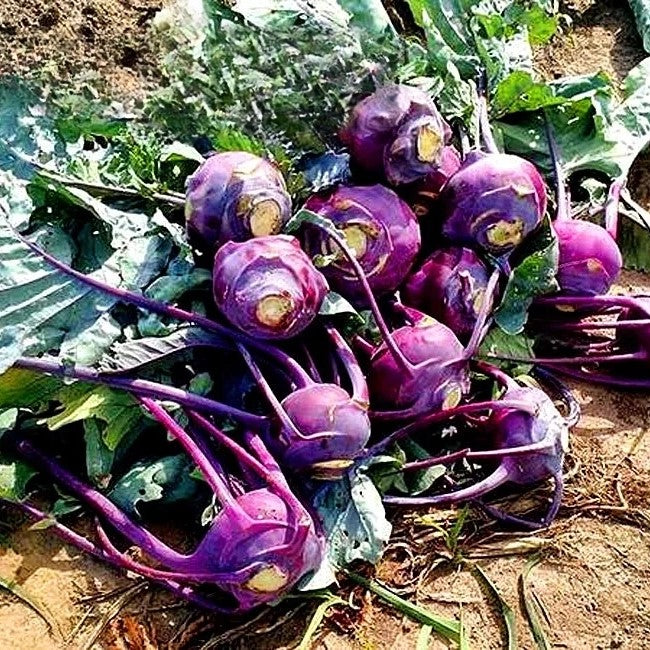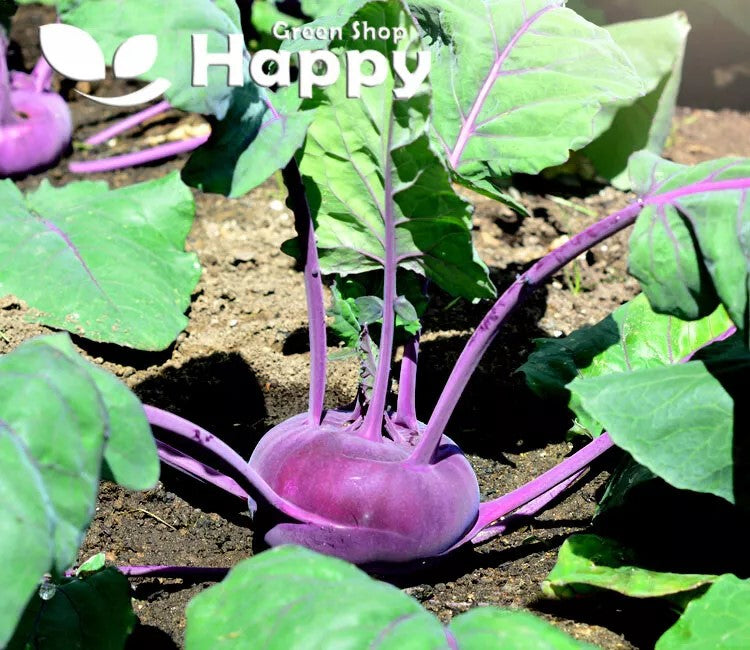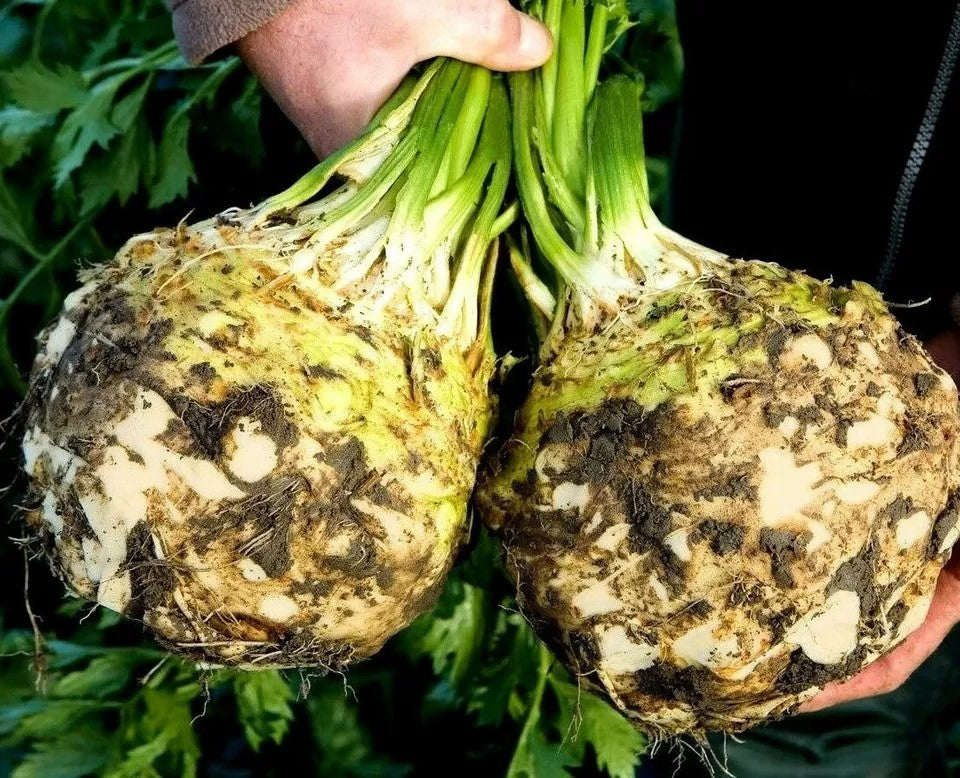Sort by:
19 products
19 products
Patty Pan 'Custard White' – Seeds (Cucurbita pepo)
The Patty Pan 'Custard White' is a striking summer squash variety producing creamy white, scalloped fruits with a tender texture and mild, nutty flavor. These unique squashes can be harvested young for grilling, steaming, and stir-fries or left to mature for stuffing and baking. Both ornamental and delicious, they add variety to your kitchen garden and your plate.
How to Grow
-
Sow seeds indoors from April or directly outdoors from May once the soil has warmed.
-
Plant 2–3 seeds per hole, 2 cm deep, thinning to the strongest seedling.
-
Space plants 60–90 cm apart in sunny, fertile soil.
-
Water regularly and feed for a steady crop.
Key Features
-
Distinctive white, scalloped fruits
-
Tender flesh with mild, nutty flavor
-
Harvest young or mature depending on use
-
Highly productive and ornamental
-
Versatile for grilling, baking, or stuffing
Ideal For
-
Summer vegetable gardens
-
Home cooks seeking versatile squash
-
Decorative harvest baskets and kitchen displays
Sowing & Harvest
-
Sow: April to June
-
Harvest: July to October
Quick Tip
-
Harvest fruits when small and tender for the best flavor and a continuous crop.
Parsnip Root 'Kamo' – Seeds
(Pastinaca sativa) – Sweet, Nutritious Root Vegetable
Parsnip 'Kamo' is a reliable, high-yielding variety producing long, smooth, tapered roots with creamy-white skin and sweet, nutty flavor. Its roots become even sweeter after the first frosts, making it a classic for autumn and winter harvests. Excellent for roasting, mashing, soups, and stews, parsnips are rich in vitamins, minerals, and dietary fiber.
Key Features
-
Type: Hardy biennial grown as annual root crop
-
Root size: Long, tapered, smooth
-
Flavor: Sweet, nutty – improves after frost
-
Harvest: Late autumn to winter
-
Use: Roasting, mashing, soups, stews
Ideal For
-
Traditional vegetable gardens
-
Winter kitchen harvests
-
Nutrient-rich root storage
-
Roasting & hearty seasonal dishes
Sowing & Growing
-
Sow outdoors: March–May, directly into prepared seed beds.
-
Depth: 1 cm, in rows 30–40 cm apart.
-
Germination: 14–28 days at 8–18°C.
-
Thinning: 10–15 cm between plants.
-
Soil: Deep, loose, stone-free, fertile soil.
-
Harvest: October–February (roots store in the ground).
Care Tips
-
Do not sow in freshly manured soil (may cause forking).
-
Slow to germinate – keep soil consistently moist.
-
Leave roots in the ground over winter for best flavor.
Parsley Hamburg 'Alba' – Seeds (Petroselinum crispum)
Parsley Hamburg 'Alba' is a dual-purpose variety grown both for its large, white, parsnip-like roots and its flavorful parsley leaves. The roots are excellent roasted, boiled, or grated raw into salads, while the leaves can be used fresh as a garnish or in cooking. A versatile and easy-to-grow addition to the kitchen garden.
How to Grow
-
Sow outdoors: March – July, directly into well-prepared soil.
-
Thin seedlings to 15 cm apart in rows 30 cm apart.
-
Prefers fertile, light, well-drained soil.
-
Water regularly for strong root development.
Key Features
-
Root parsley variety with sweet, nutty flavor
-
Dual-purpose: edible roots & aromatic leaves
-
Easy to grow and hardy in most soils
-
Stores well after harvest
-
Great for soups, stews, roasting, and garnishing
Ideal For
-
Root vegetable dishes
-
Fresh parsley leaves for cooking
-
Kitchen gardens and allotments
Sowing & Harvest
-
Sow: March – July
-
Harvest: October – December
Quick Tip
For the best roots, loosen soil well before sowing to allow long, straight growth.
Okra 'Clemson Spineless' – Seeds (Abelmoschus esculentus)
Okra 'Clemson Spineless' is the most popular and widely grown okra variety, prized for its tender, spineless green pods and high yields. A warm-season crop, it thrives in sunny conditions and produces long, slim pods that are perfect for frying, grilling, soups, curries, and traditional gumbo dishes. Compact and productive, it’s ideal for home gardens or allotments.
How to Grow
-
Sow indoors: March – May in pots or modules with heat.
-
Transplant outdoors: After last frost when soil has warmed.
-
Soil: Fertile, well-drained soil in full sun.
-
Spacing: 30–45 cm apart.
-
Water regularly during dry spells to encourage pod production.
Key Features
-
Famous spineless okra variety
-
High-yielding and fast-growing
-
Tender, slim pods with rich flavor
-
Heat-loving annual for summer harvests
-
Perfect for gumbo, curries, soups, and frying
Ideal For
-
Kitchen gardens and allotments
-
Sunny, sheltered growing positions
-
Gardeners who enjoy exotic vegetables
Sowing & Harvest
-
Sow: March – May
-
Harvest: July – October
Quick Tip
Harvest pods when young (7–10 cm long) for the best flavor and tenderness. Picking regularly encourages further production.
Komatsuna Red Spinach Seeds (Periviridis)
Bring bold color and exceptional nutrition to your garden with Komatsuna Red Spinach, also known as Japanese mustard spinach. This hardy leafy green features striking red-purple leaves with a mild, slightly mustardy flavor. A versatile and fast-growing crop, it thrives in both cool and warm conditions, making it perfect for year-round sowing. Delicious in salads, stir-fries, and soups, it’s a nutrient-packed choice for any kitchen garden.
How to Grow
-
Sow directly outdoors from spring to autumn or under cover in winter.
-
Prefers fertile, well-drained soil in full sun or partial shade.
-
Sow seeds thinly 1 cm deep in rows 30 cm apart.
-
Thin seedlings to 15–20 cm spacing for full-sized plants.
-
Harvest young leaves in 25–30 days or mature leaves in 40–50 days.
Key Features
-
Fast-growing, cut-and-come-again leafy green
-
Beautiful red-purple leaves with mild mustard flavor
-
High in vitamins A, C, and calcium
-
Tolerates both heat and cold for extended cropping
-
Suitable for salads, stir-fries, soups, and juicing
Ideal For
-
Year-round vegetable growing
-
Nutrient-rich kitchen gardens
-
Gardeners who enjoy fast, repeat harvests
-
Adding color and flavor to fresh dishes
Sowing
-
Best time: March to October (under cover for winter)
-
Depth: 1 cm
-
Spacing: 15–20 cm between plants
-
Position: Full sun or partial shade
-
Harvest: From 25 days after sowing
Quick Tip
-
Pick leaves regularly to encourage new growth and enjoy tender, flavorful harvests throughout the season.
Kohlrabi 'Violeta' – Seeds (Brassica oleracea)
Kohlrabi 'Violeta' is a striking purple-skinned variety with crisp, white flesh and a sweet, nutty taste. Its unique color and mild flavor make it an excellent addition to both the garden and the kitchen. Perfect eaten raw in salads, grated into slaws, or lightly cooked in stir-fries, soups, and roasts.
This fast-growing crop is hardy, reliable, and suitable for multiple sowings throughout the season. Compact plants make it an ideal choice for small gardens, raised beds, or containers.
How to Grow
-
Sow indoors/outdoors: March – July
-
Depth: 1 cm
-
Spacing: 20–25 cm between plants, 30 cm between rows
-
Position: Full sun or partial shade
-
Soil: Moist, fertile, well-drained soil
-
Watering: Keep soil evenly moist to prevent woodiness and splitting
Key Features
-
Vibrant purple variety with sweet, crisp white flesh
-
Delicious raw or cooked – versatile in salads, stir-fries, and roasts
-
Fast-growing and suitable for repeat sowings
-
Compact plants – ideal for small gardens and containers
-
Attractive crop with ornamental value in the vegetable patch
Harvest
-
Harvesting period: May – October
-
Pick when bulbs reach 5–8 cm in diameter for the best flavor and texture.
Short Tip
For tender bulbs, avoid letting plants become oversized – harvest regularly.
Herb Corn Salad Seeds (Valerianella locusta)
Also known as Lamb’s Lettuce or Mâche, Corn Salad is a fast-growing leafy green with soft, nutty-flavored leaves. Popular in European cuisine, it’s perfect for salads, sandwiches, and as a tender garnish. Hardy and cold-tolerant, it thrives in cooler months, making it an excellent choice for autumn and winter harvests. Easy to grow and highly nutritious, it’s a must-have for year-round salads.
How to Grow
-
Sow directly outdoors from March to May, and again from August to October.
-
Prefers fertile, well-drained soil in full sun or partial shade.
-
Sow thinly, 1 cm deep, in rows 20 cm apart.
-
Thin seedlings to 10 cm spacing for healthy plants.
-
Harvest young leaves as needed for cut-and-come-again cropping.
Key Features
-
Tender, nutty-flavored leaves
-
Hardy and cold-tolerant, ideal for winter salads
-
Quick and easy to grow
-
Perfect for cut-and-come-again harvesting
-
Highly nutritious and versatile in the kitchen
Ideal For
-
Autumn and winter vegetable gardens
-
Fresh salads and sandwich fillings
-
Containers, raised beds, and small gardens
-
Gardeners seeking a reliable cool-season green
Sowing
-
Best time: March–May, August–October
-
Depth: 1 cm
-
Spacing: 10 cm between plants, 20 cm between rows
-
Position: Full sun or partial shade
-
Harvest: October to March
Quick Tip
-
Succession sow every few weeks for a continuous supply of fresh leaves throughout the cooler seasons.
Celeriac ‘Albin’ – Seeds (Apium graveolens)
Celeriac ‘Albin’ is a dependable variety producing smooth, round roots with creamy white flesh and excellent flavor. Known for its tender texture and mild, nutty taste, this versatile root vegetable is perfect for mashing, roasting, soups, and salads. A slow-growing but hardy crop, it thrives in cooler climates and stores well through winter.
How to Grow
-
Sow indoors: February – April in trays or modules at 18–20°C.
-
Transplant outdoors: May, spacing 30 cm apart in rows 40 cm apart.
-
Prefers fertile, moisture-retentive soil in full sun.
-
Keep well-watered during dry spells to encourage large, smooth roots.
Key Features
-
Smooth, round roots with white flesh
-
Nutty, mild flavor for versatile cooking
-
Good storage qualities for winter use
-
Reliable variety for cool climates
Ideal For
-
Mashing, roasting, and soups
-
Winter storage and seasonal dishes
-
Home gardens and allotments
Sowing & Harvest
-
Sow: February – April
-
Harvest: October – December
Quick Tip
Remove side shoots during the season to focus the plant’s energy on swelling the root.
Beetroot 'Chioggia' – Seeds
(Beta vulgaris) – Traditional Italian Heirloom with Striking Rings
Beetroot 'Chioggia' is a famous Italian heirloom variety known for its stunning candy-striped flesh, with alternating pink and white rings. Sweet, mild, and tender, it’s perfect for eating raw in salads to show off its striking appearance, or cooked for a softer, delicate flavor. Easy to grow and quick to mature, it adds both beauty and taste to the garden and kitchen.
Key Features
-
Type: Biennial root crop, grown as annual
-
Roots: Round, medium-sized with concentric pink and white rings
-
Flavor: Sweet, mild, tender texture
-
Harvest: Summer to autumn
-
Use: Salads, roasting, pickling, juicing
Ideal For
-
Unique and decorative salads
-
Traditional and gourmet cooking
-
Kitchen gardens and allotments
-
Beginner-friendly vegetable growing
Sowing & Growing
-
Sow outdoors: March–July, thin seedlings as they grow.
-
Spacing: 10 cm between plants, 30 cm between rows.
-
Soil: Loose, fertile, well-drained soil.
-
Sunlight: Full sun for best development.
-
Harvest: June–October, when roots reach 5–7 cm in diameter.
Care Tips
-
Keep soil moist for tender, juicy roots.
-
Thin seedlings early to prevent overcrowding.
-
Harvest young for best flavor and color.
Showing 18/19

